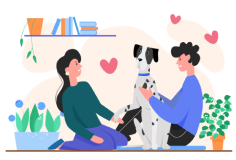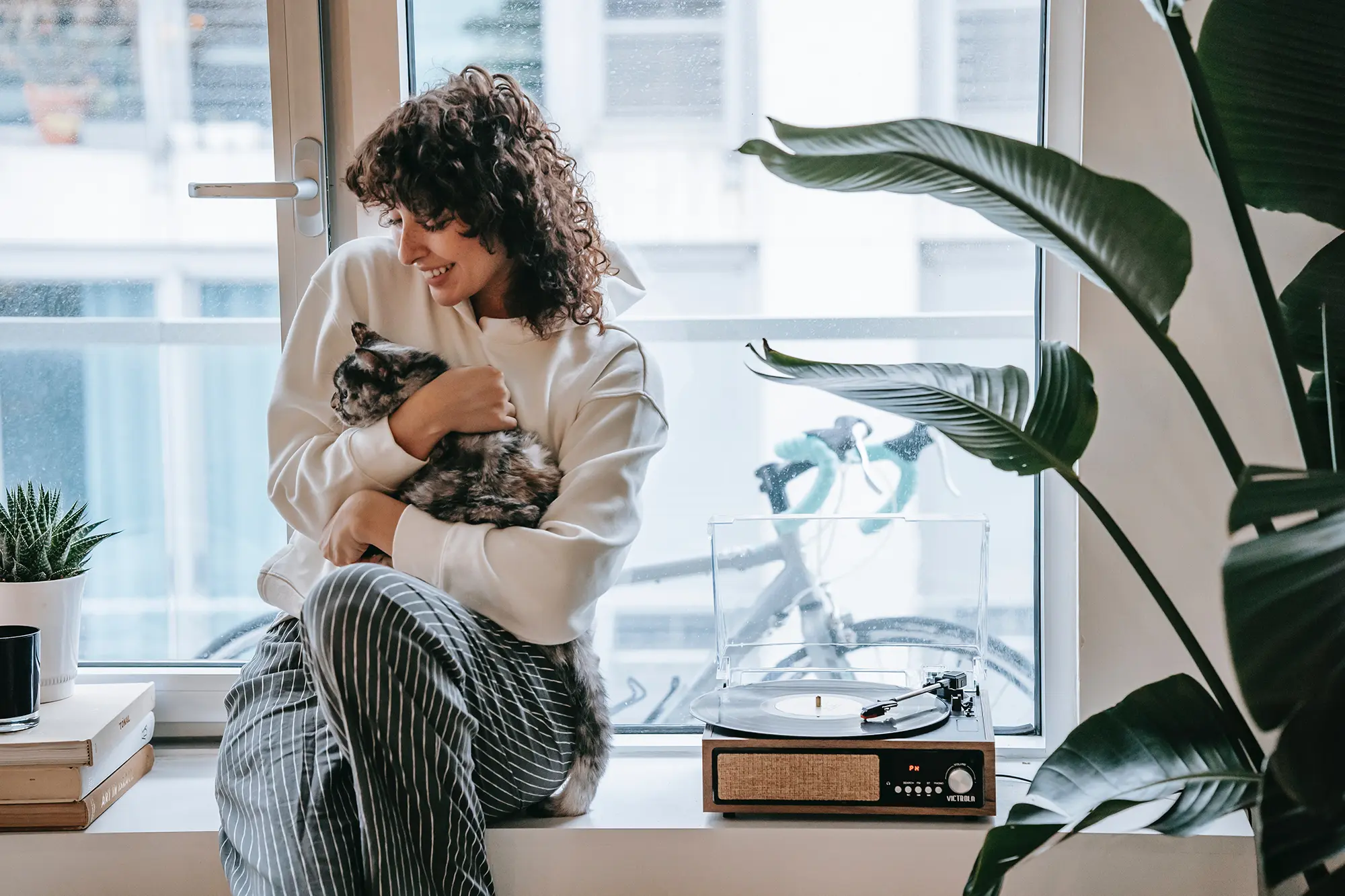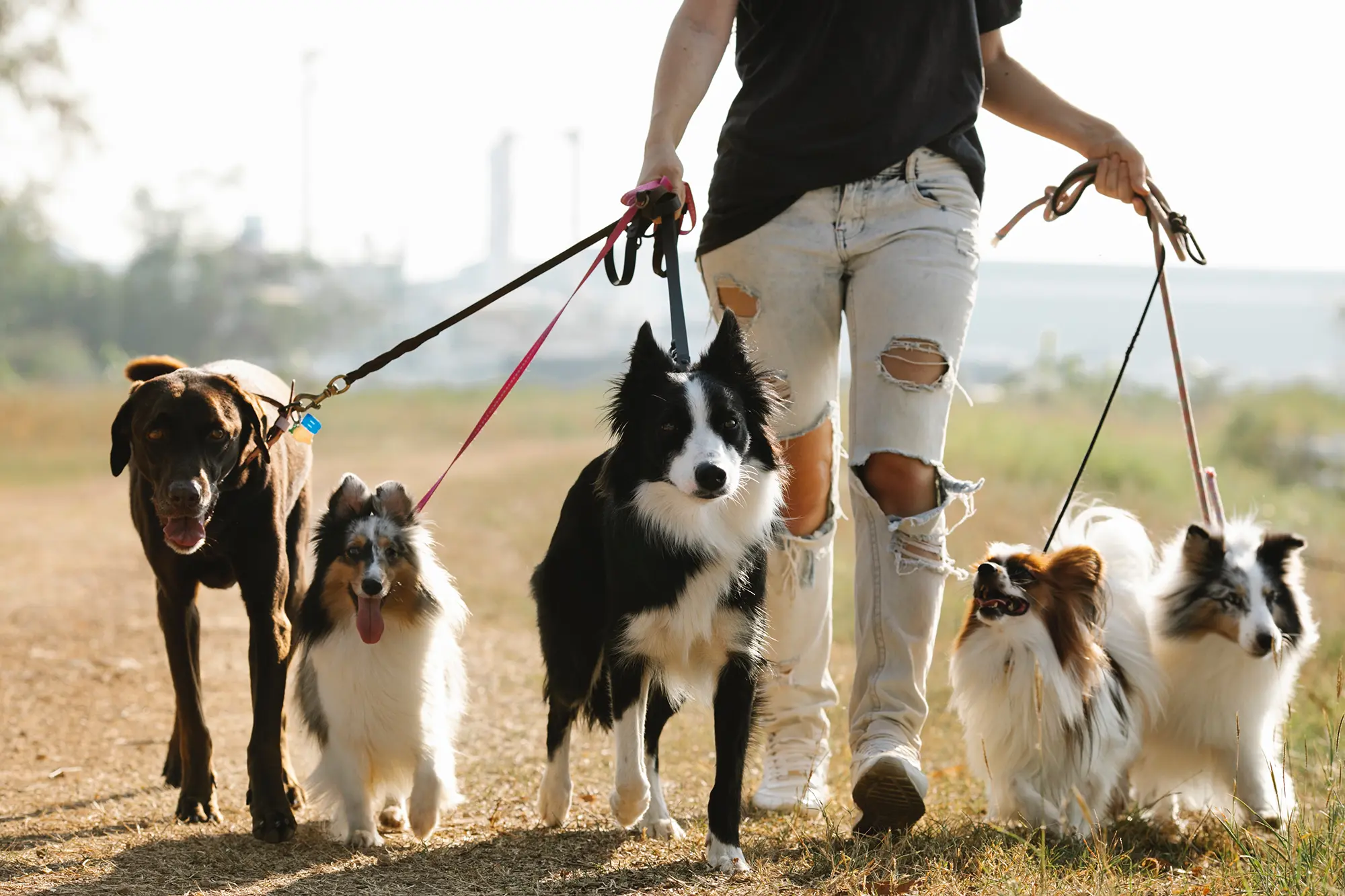tips to help your dog’s separation anxiety
Author: PawPots Team
 02 Oct 2024
02 Oct 2024
 5 min
5 min Separation anxiety is a common challenge for many dog owners. Your dog may become stressed or anxious when you leave, leading to destructive behaviors, excessive barking, or other signs of distress. If you're dealing with this issue, you're not alone! The good news is that there are several strategies you can use to ease your dog's anxiety and help them feel more comfortable when they're alone.
In this article, we'll explore some effective tips to help your dog cope with separation anxiety and create a calmer, more peaceful environment for them.
1. Gradual Desensitization
One of the most effective ways to reduce separation anxiety is by gradually getting your dog used to being alone. Start by leaving your dog for short periods, such as a few minutes, and gradually increase the time you are away. This method, called desensitization, helps your dog learn that when you leave, you will always come back.
To get started:
• Leave for just a few minutes, then return before your dog gets anxious.
• Slowly extend the time you are gone in small increments, rewarding calm behavior with treats or praise.
Consistency is key with this approach. By practicing regularly, your dog will build confidence that being alone isn't something to fear.
2. Create a Calm Environment
A calm environment can help reduce anxiety for your dog. Before leaving, make sure your dog’s space is cozy and safe. You can do this by:
• Providing their favorite toys or puzzles to keep them engaged.
• Playing calming music or leaving the TV on to create background noise.
• Using a comfortable bed or blanket that smells like you, which can offer comfort in your absence.
Creating a soothing space can help your dog feel more relaxed, even when you're not home.
3. Exercise Before Leaving
A well-exercised dog is a calmer dog. Physical activity helps to burn off your dog’s energy and can reduce anxiety. Before leaving, try to take your dog for a walk, play fetch, or engage in a fun activity that tires them out. When they're physically tired, they'll be more likely to rest and stay calm while you're away.
Even a brisk walk in the morning can make a big difference in your dog’s mood and reduce their anxiety.
Why Your Dog Stopped Eating
4. Practice Short Departures
Try leaving and returning multiple times throughout the day to show your dog that it’s normal for you to come and go. Keep the departures and arrivals low-key, without making a big fuss. This prevents your dog from getting overly excited when you return, which can reduce their overall stress levels.
Here’s how to practice:
• Leave the house for a minute or two, then return calmly.
• Repeat several times, increasing the duration slightly each time.
• Stay relaxed and avoid too much attention when you come back, reinforcing the idea that leaving is no big deal.
5. Offer Interactive Toys
Interactive toys, like puzzle feeders or treat-dispensing toys, are great for keeping your dog’s mind occupied while you're away. These toys engage your dog’s brain and help distract them from your absence.
Make the toy something special that your dog only gets when you leave. This creates a positive association with your departure and helps shift their focus from feeling anxious to having fun.
6. Establish a Routine
Dogs thrive on routines. Establishing a consistent schedule can help reduce anxiety, as your dog will know what to expect each day. Try to keep feeding, walking, and playtimes at similar times daily, so your dog feels secure in their routine.
When your dog can predict when you’ll be leaving and returning, it can ease their anxiety since they know what’s coming next.
7. Teach Independence
Encouraging your dog to be independent while you're home can help reduce separation anxiety. Start by teaching them to stay in another room or on their bed while you move around the house. Gradually increase the time they spend alone, and reward calm behavior with treats or praise.
This helps your dog learn that it's okay to be alone, even when you're nearby. Building independence while you're still at home can ease their anxiety when you leave the house.
8. Consider Professional Help
If your dog’s separation anxiety is severe, it might be helpful to consult a professional trainer or a veterinarian. A trainer can work with you to create a personalized plan for your dog, using behavior modification techniques to ease their anxiety.
Additionally, some dogs may benefit from anti-anxiety medications or supplements. Talk to your vet about whether this could be an option for your dog.
9. Avoid Punishment
It’s essential to avoid punishing your dog for behaviors related to separation anxiety. Destructive actions, barking, or accidents in the house are not signs of misbehavior, but rather symptoms of distress. Punishment can increase your dog’s anxiety and make the problem worse.
Instead, focus on positive reinforcement when your dog stays calm and relaxed. With patience and understanding, you can help your dog feel more secure.
Does Your Dog Know You Love Them?
Conclusion
Separation anxiety can be tough, but with the right approach, you can help your dog feel more comfortable when you’re away. By gradually desensitizing your dog to being alone, creating a calm environment, and offering mental and physical stimulation, you’ll set your dog up for success. Remember, patience and consistency are key to helping your furry friend overcome their fears.

Give Back The Love
Show your love to your pets with our high-quality, delicious and healthy meals! Show your love to your pets with our high-
quality, delicious and
healthy meals!






